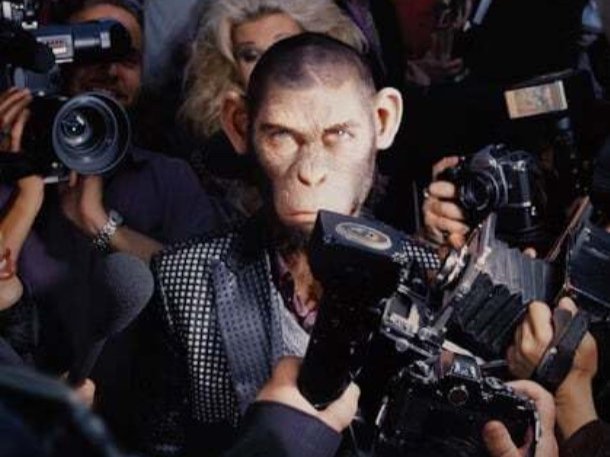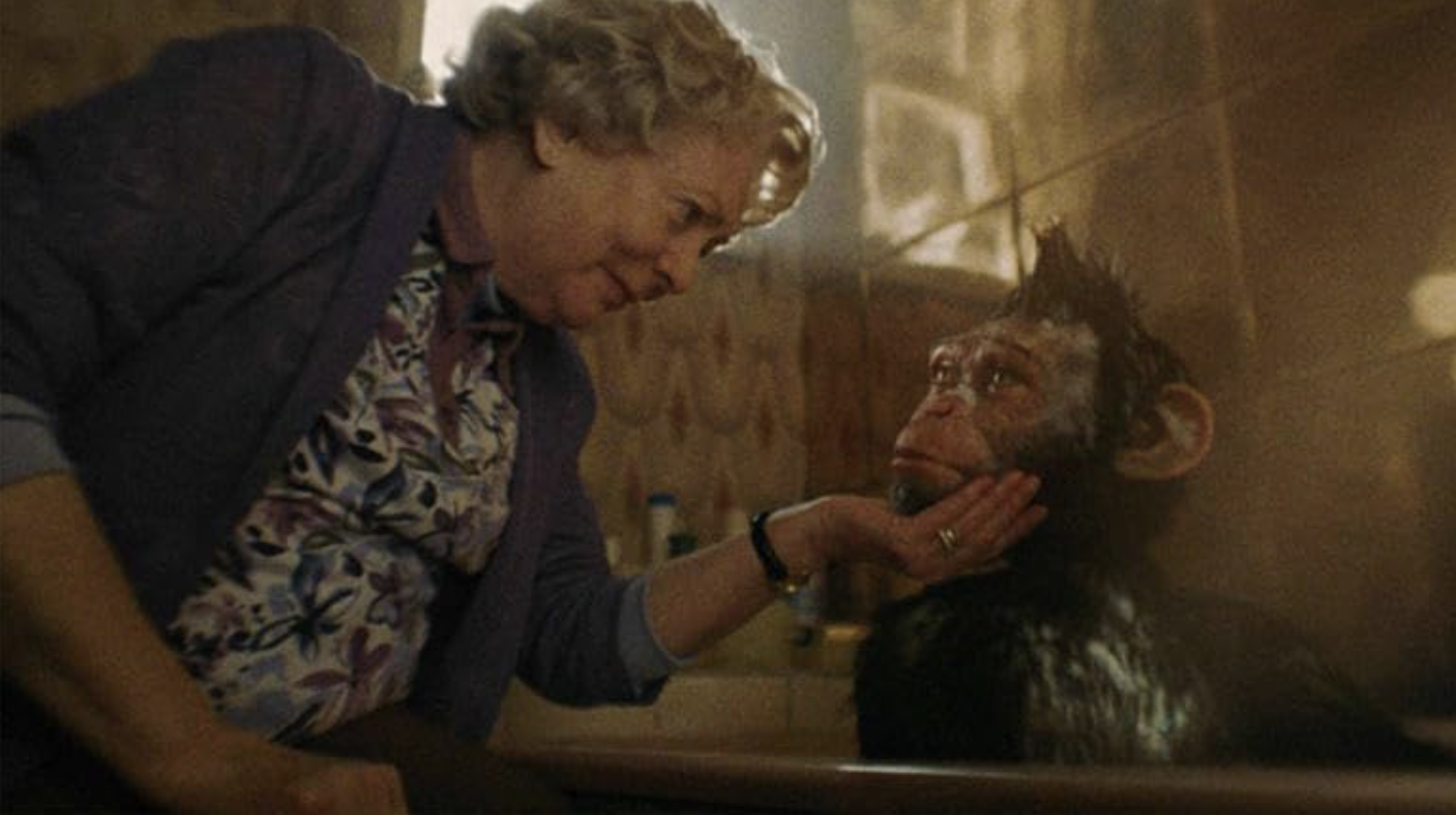
Better Man
January 6, 2025 / Kevin Ward — ★★★★
Musical biopics often fall into a predictable rhythm, tracing iconic musicians' meteoric rise, inevitable fall, and hopeful redemption in a formulaic, jukebox-style narrative. But Michael Gracey's Better Man defies these conventions with a boldness that feels as revolutionary as the bone-to-spaceship jump cut in 2001: A Space Odyssey. By making the audacious decision to portray Robbie Williams as a CGI monkey, Gracey redefines what the genre can achieve, delivering a dazzling visual spectacle and an emotionally resonant story. The musical biopic has evolved!
Admittedly, I came to the film without much personal investment in Williams. His music has always existed on the periphery of my awareness, and I could scarcely recognize more than a handful of his songs. Yet Better Man managed to captivate me, proving to be one of the most surprising cinematic experiences of the year.
The film's central conceit—a singing and dancing digital monkey representing Robbie—might seem whimsical, but in Gracey's capable hands, it becomes a masterstroke. The "performing monkey" metaphor encapsulates the relentless demands of show business, where entertainers are expected to perform tirelessly, often at great personal cost. This clever metaphor not only reflects Robbie's career but also highlights the broader sacrifices made by artists navigating fame and scrutiny.
The decision to portray Robbie as a digital monkey wasn't just inventive—it was practical. De-aging techniques still haven't traversed the uncanny valley. Casting another actor to portray him could have proven to be equally challenging. Instead, the filmmakers leaned into the unconventional, creating a character that feels both surreal and deeply human. The stunning motion capture work by Jonno Davies brings the monkey to life with expressive detail, blending seamlessly with vibrant visuals.
Gracey, whose background in visual effects shines throughout the film, demonstrates his talent for innovation and storytelling. The CGI is so seamless and lifelike that the monkey becomes more than just a visual spectacle—it's a fully realized character. Paired with dynamic choreography by Ashley Wallen, the musical sequences explode with energy and creativity, blending movement, music, and visuals in a way that feels alive and immersive.
One of the most breathtaking moments is the Rock DJ sequence. As one of the few songs I recognized, it immediately stood out, but there's more to its impact than familiarity. The sequence is a marriage of cinematic imagery, intricate choreography, and infectious music hooks amplified by dazzling digital effects. It's no surprise that a one-minute clip from this number went viral—it begs to be seen in the largest format possible, enveloping the audience in its sheer artistry and scale.
The film moves through the phases of Robbie's life, beginning with his troubled family dynamics and his early years as a boy with big dreams. From there, it charts his meteoric rise with the boy band Take That before his decision to transition into a solo artist. The film doesn't shy away from his struggles with addiction either. There's certainly a novelty in watching a CGI monkey take in a bunch of drugs, but the scenes never stray into mockery. Instead, they reflect the chaos and turmoil of those years with a surprising sensitivity.
At the heart of the film, though, is the relationship between Robbie and his father, Peter Williams (Steve Pemberton). Their estrangement casts a long shadow over Robbie's life, shaping his insecurities and fueling his quest for validation. The film takes its time exploring their fractured bond, showing how Peter's absence during key moments left scars that time couldn't heal, but eventually builds to a powerful emotional climax when Robbie and Peter reunite on stage during one of Robbie's concerts. As the spectacle of the performance fades, the moment focuses solely on father and son. Their embrace is a cathartic culmination of years of pain, longing, and reconciliation. It's a scene that anchors the film's theatricality with raw, human emotion, reminding the audience that behind the dazzling visuals lies a deeply personal story.
I can't overstate how impressed I was by Better Man. Gracey's bold choices make it a standout in a genre often weighed down by clichés. This is a film that could have easily faltered—a laughable experiment overshadowing its subject—but instead, it's a triumph of originality and heart. Even as someone who wouldn't consider themselves a fan of Robbie Williams, I found myself fully invested in his journey.
The film's musical numbers are undeniably its highlights, but they never overshadow the narrative. Instead, they enhance it, blending spectacle with substance. The monkey dazzles with its flawless effects, but it's also a reflection of the very human struggles Robbie faces.
Better Man isn't just a musical biopic; it's a reimagining of what the genre can be. It takes big, audacious risks and lands them with stunning precision. Michael Gracey has crafted something truly original—a film that is as entertaining as it is moving.
For fans of Robbie Williams, this film is an absolute must-watch. But even if you, like me, are unfamiliar with much of his music, you might find yourself swept up in the sheer spectacle and emotional depth of the story. Better Man is an experience that reminds us of the power of cinema to surprise, move, and dazzle in equal measure. In a year crowded with sequels, reboots, and safe bets, Better Man stands out as a shining example of originality and heart.
Director: Michael Gracey
Screenplay: Simon Gleeson, Oliver Cole, Michael Gracey
Cast: Robbie Williams, Jonno Davies, Steve Pemberton, Damon Herriman, Raechelle Banno, Alison Steadman, Kate Mulvany
Producer: Paul Currie, p.g.a., Michael Gracey, p.g.a., Coco Xiaolu Ma, Jules Daly, Craig McMahon
Runtime: 135 minutes
Rated: R

